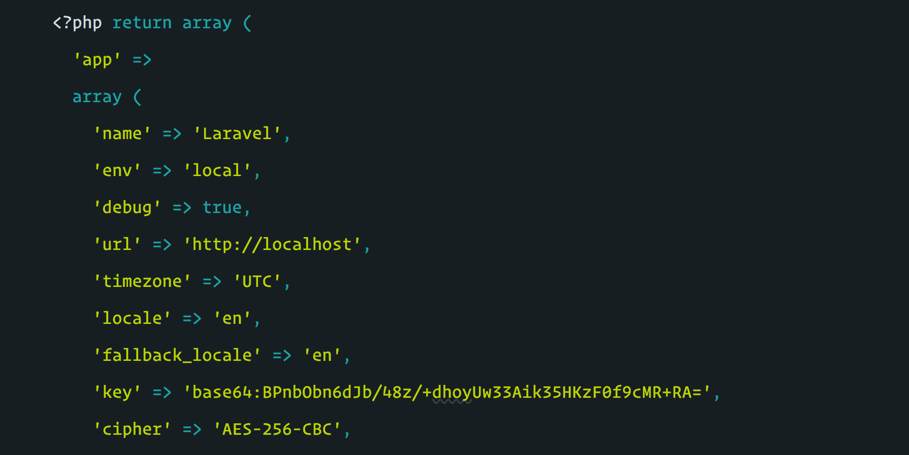来源 https://laravel-china.org/articles/5101/source-code-reading-laravel-php-artisan-configcache
源码在哪
首先,我们还是可以使用编辑器的搜索功能搜 ConfigCacheCommand,这样就可以直接打开 config:cache 命令的源代码了,位于 IlluminateFoundationConsoleConfigCacheCommand 中,关键的代码还是位于 fire() 方法中:
public function fire(){
$this->call('config:clear');
// other codes
}首先,在执行 php artisan config:cache 之前,我们需要将之前缓存过的配置文件清除,就是通过 $this->call('config:clear'); 这一行代码来实现的。
那,config:clear 的源码在哪呢?
这个命令的源码位于
IlluminateFoundationConsoleConfigClearCommand中,你依然是可以在编辑器搜ConfigClearCommand,然后定位到这里的fire()方法里面:
public function fire(){
$this->files->delete($this->laravel->getCachedConfigPath());
$this->info('Configuration cache cleared!');
}你看,这里的代码就非常简单,主要就是删除原来缓存的配置文件,这个缓存的配置文件通过getCachedConfigPath() 获取到,这个 getCachedConfigPath() 在 IlluminateFoundationApplication 中:
public function getCachedConfigPath(){
return $this->bootstrapPath().'/cache/config.php';
}熟悉了吧,它也是放到 bootstrap/cache/ 目录下面的,命名为 config.php。
那么以上就删除完缓存的配置了,然后我们再次回到 config:cache 中。既然旧的缓存已经删除,那么我们就需要生成新的缓存文件了,所以再次聚焦 ConfigCacheCommand 的 fire() 方法:
public function fire(){
$config = $this->getFreshConfiguration();
$this->files->put(
$this->laravel->getCachedConfigPath(), '<?php return '.var_export($config, true).';'.PHP_EOL
);
}首先 通过 getFreshConfiguration() 获取所有新的配置信息,这部分的代码逻辑就在 ConfigCacheCommand 中:
protected function getFreshConfiguration(){
$app = require $this->laravel->bootstrapPath().'/app.php';
$app->make(ConsoleKernelContract::class)->bootstrap();
return $app['config']->all();
}这三行代码很简单,就是生成了一个 Laravel 的 Application 实例,然后通过 $app['config']->all() 获取所有的配置信息。
获取配置信息之后,就把新的配置信息写入缓存中,上面 ConfigCacheCommand fire() 方法的这一行实现:
$this->files->put(
$this->laravel->getCachedConfigPath(),
'<?php return '.var_export($config, true).';'.PHP_EOL
);getCachedConfigPath() 已经很熟悉啦,在讨论 cache:clear 时我们就知道,其实就是获取到 bootstrap/cache/config.php 文件,然后写入配置的内容 var_export($config, true),所以最后缓存的配置文件大概的内容是这样的:
最后
有了缓存的配置文件,下次访问 Laravel 项目的时候就是直接读取缓存的配置了,而不用再次去计算和获取新的配置,这样来说,速度依然会快那么一点点。